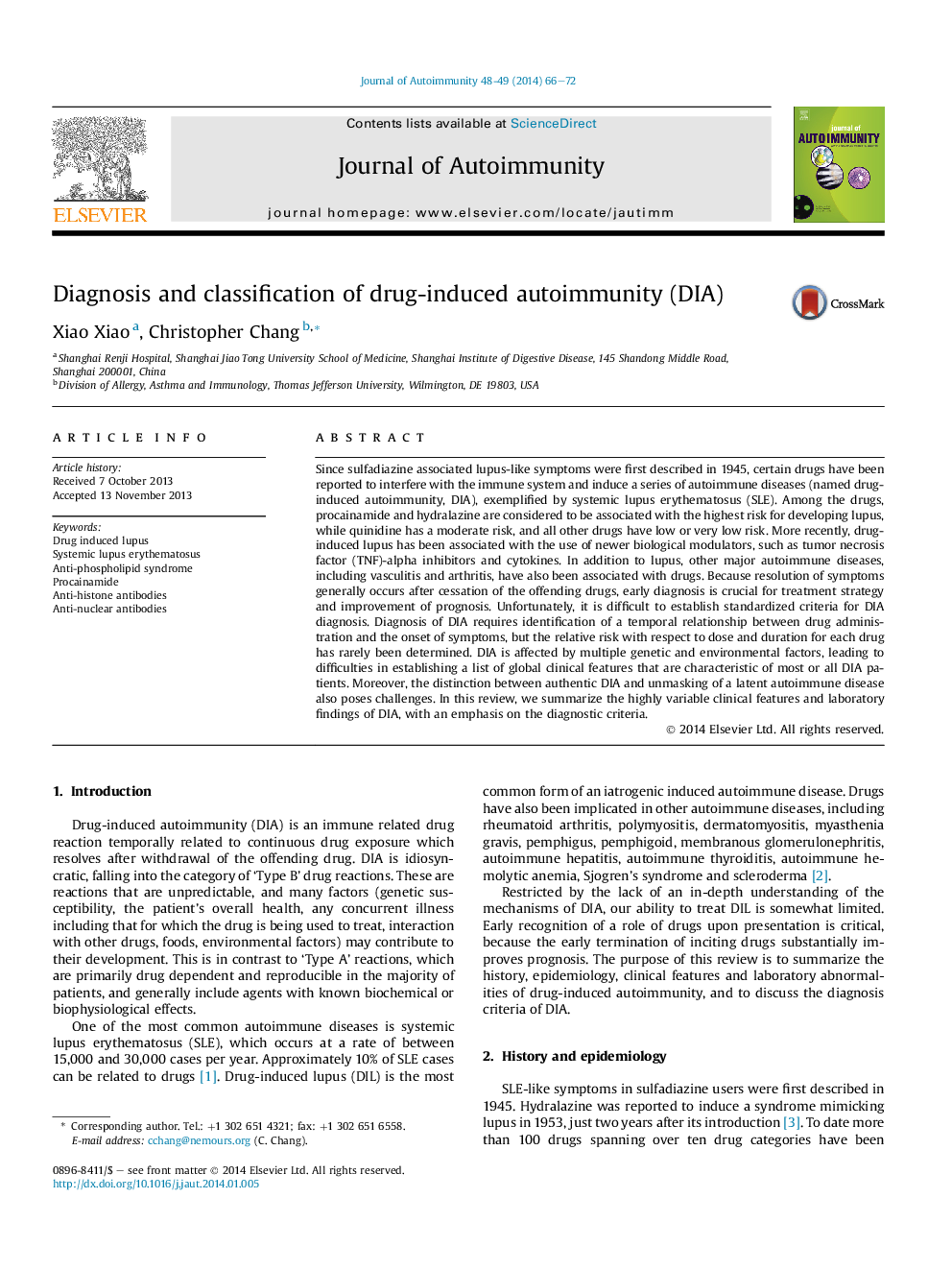| Article ID | Journal | Published Year | Pages | File Type |
|---|---|---|---|---|
| 3367838 | Journal of Autoimmunity | 2014 | 7 Pages |
Since sulfadiazine associated lupus-like symptoms were first described in 1945, certain drugs have been reported to interfere with the immune system and induce a series of autoimmune diseases (named drug-induced autoimmunity, DIA), exemplified by systemic lupus erythematosus (SLE). Among the drugs, procainamide and hydralazine are considered to be associated with the highest risk for developing lupus, while quinidine has a moderate risk, and all other drugs have low or very low risk. More recently, drug-induced lupus has been associated with the use of newer biological modulators, such as tumor necrosis factor (TNF)-alpha inhibitors and cytokines. In addition to lupus, other major autoimmune diseases, including vasculitis and arthritis, have also been associated with drugs. Because resolution of symptoms generally occurs after cessation of the offending drugs, early diagnosis is crucial for treatment strategy and improvement of prognosis. Unfortunately, it is difficult to establish standardized criteria for DIA diagnosis. Diagnosis of DIA requires identification of a temporal relationship between drug administration and the onset of symptoms, but the relative risk with respect to dose and duration for each drug has rarely been determined. DIA is affected by multiple genetic and environmental factors, leading to difficulties in establishing a list of global clinical features that are characteristic of most or all DIA patients. Moreover, the distinction between authentic DIA and unmasking of a latent autoimmune disease also poses challenges. In this review, we summarize the highly variable clinical features and laboratory findings of DIA, with an emphasis on the diagnostic criteria.
